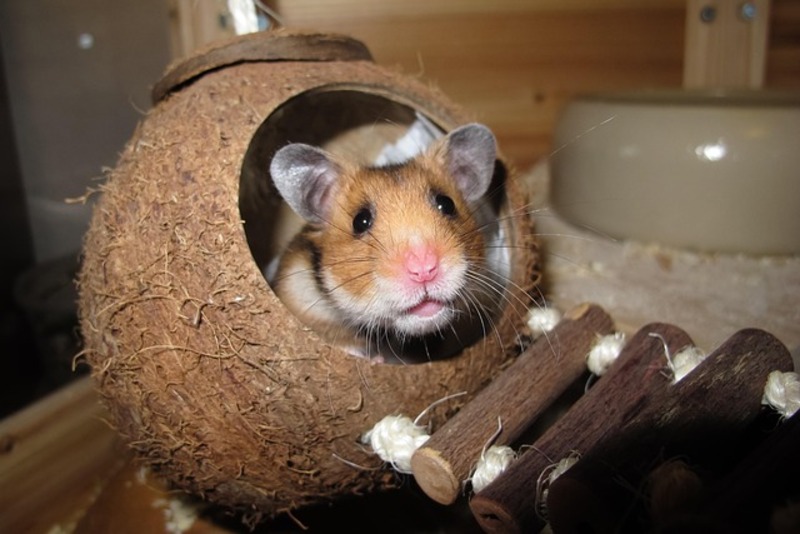
Hamster as Pets
Published on June 26, 2025
Hamsters are small, nocturnal rodents that have long been popular pets, especially for first-time pet owners or those with limited space. Their compact size, relatively low maintenance, and endearing antics make them appealing companions. However, despite their small stature, hamsters have specific needs that must be met to ensure their health and happiness. Understanding these requirements is crucial before bringing one of these tiny creatures into your home.
This comprehensive guide will cover the essential aspects of hamster care, from choosing the right species to setting up their ideal habitat and providing proper nutrition.
Are Hamsters the Right Pet for You?
Hamsters are generally solitary animals (with exceptions like Dwarf Campbells and Roborovskis, though even they can fight). They are nocturnal, meaning they are most active at night. They are ideal for:
- Individuals with Limited Space: Their enclosures are relatively compact.
- Those Seeking an Observational Pet: While some hamsters tolerate gentle handling, they are not typically cuddly pets.
- Night Owls: Their nocturnal nature means they'll be most active when you might be winding down.
Choosing Your Hamster Species
There are several popular hamster species, each with slightly different characteristics:
- Syrian Hamster (Golden Hamster): The largest and most common pet hamster. They are strictly solitary and must be housed alone. Good for handling.
- Dwarf Campbells Russian Hamster: Small, can sometimes be housed in same-sex pairs or groups if introduced young, but often do best alone. Prone to diabetes.
- Winter White Dwarf Hamster: Similar to Campbells, often changes fur color in winter. Can be housed in pairs.
- Roborovski Dwarf Hamster: The smallest and fastest hamster. Best kept in same-sex pairs or groups. Not ideal for handling due to their speed.
- Chinese Hamster: Longer body and tail than other dwarfs. Can be housed alone or in same-sex pairs.
1. The Essential Habitat: The Hamster Home
A spacious and secure cage is paramount. The common misconception is that small cages are sufficient. Hamsters need a lot of space to roam and burrow.
- Minimum Size: A minimum of 450 square inches (2,900 sq cm) of unbroken floor space is recommended, but larger is always better. Bar cages, tanks (20-gallon long minimum), or bin cages are popular options.
- Substrate: A deep layer (at least 6-10 inches) of paper-based bedding (e.g., Carefresh, Aspen shavings) is crucial for burrowing and nesting. Avoid cedar or pine shavings, as they can cause respiratory issues.
- Wheel: An appropriately sized, solid-surface exercise wheel is essential. For Syrians, a 10-12 inch wheel is needed; for dwarfs, 6.5-8 inches. Avoid wire wheels, which can cause bumblefoot.
- Hides & Tunnels: Provide multiple hides (ceramic, wooden, or plastic) and tunnels for security and enrichment.
- Water Bottle: A sipper bottle with fresh, clean water changed daily.
- Food Bowl: A small, heavy ceramic bowl that won't tip over.
2. Diet: Balanced Nutrition
Hamsters are omnivores. Their diet should consist of a high-quality commercial hamster mix supplemented with fresh foods.
- Commercial Mix: Look for a mix with at least 18-20% protein, 4-6% fat, and 8-10% fiber. Avoid mixes with excessive amounts of sugary treats or corn.
- Fresh Foods (in moderation): Small amounts of fresh vegetables (broccoli, carrots, cucumber, leafy greens), fruits (apple, banana, berries - sparingly due to sugar), and cooked lean protein (chicken, egg).
- Treats: Unsalted nuts, seeds (sunflower, pumpkin), and plain popcorn (no butter/salt) can be given as occasional treats.
- Avoid: Chocolate, citrus fruits, raw kidney beans, onions, garlic, and sugary human foods.
3. Enrichment and Exercise
Beyond the wheel, hamsters need mental and physical stimulation:
- Chew Toys: Hamsters' teeth grow continuously, so provide safe chew toys (untreated wood, cardboard tubes) to keep them trimmed.
- Foraging: Scatter food around the cage to encourage natural foraging behavior.
- Hamster Ball (with caution): Use for short periods (15-20 minutes) in a safe, open area. Supervise closely.
4. Handling and Taming
Taming a hamster requires patience and consistency. Start by letting them get used to your scent, then offer treats from your hand. Gradually progress to gentle petting and then picking them up. Always approach slowly and avoid startling them.
5. Health and Veterinary Care
Hamsters are generally hardy, but they can suffer from various ailments, including wet tail (diarrhea), respiratory infections, and tumors. Look for signs of illness such as lethargy, loss of appetite, ruffled fur, or discharge from eyes/nose. Find a veterinarian experienced with exotic small animals before an emergency arises.
Conclusion
Hamsters can be delightful and engaging pets, but they are not just 'cage fillers.' They require a commitment to providing a spacious, stimulating, and clean environment, along with a balanced diet and attentive care. By understanding and meeting their specific needs, you can ensure your tiny companion lives a long, healthy, and happy life.